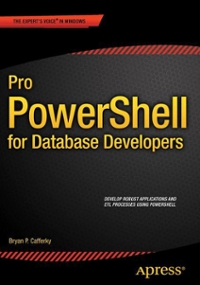Answered step by step
Verified Expert Solution
Question
1 Approved Answer
The design documentation is a complete clear description of how the program is organized. It is language - independent describing the overall program structure. The
The design documentation is a complete clear description of how the program is organized. It is languageindependent
describing the overall program structure. The more time spent designing, the less time changing and debugging.
Class diagrams pictorially describe the classes and their static relationships from which a system is built. Often high
level pseudocode is included for the algorithms used by methods which show the flow of the program. All other
functions clearly define the task they perform a function performs one task Class diagrams include descriptions of
GeneralizationInheritance parentchild classes
AggregationComposition construction of complex objects from simpler ones
Besides class diagrams and class descriptions see below show data structures, actual memory used. Give each
piece context how it fits, object that owns it so that it makes sense. Additionally, describe interaction of objects via
pseudocode for essential use cases. Describe instantiations, actual objects and the methods called to accomplish the
task. Imagine that someone other than you will implement it and then extend your program; or you will have to
implement someone else's design. This must be a good objectoriented design. This means everything except very
basic data is an object. Do NOT store data as long concatenated strings, violating good OO design. Strings are not
parameters in any methods. Use strings for only one item such as one name. Do NOT concatenate strings anywhere.
Design beyond the specifications in the UML you turn in Design so that the answer to all these questions is yes
maintaining good design principles Could you easily add more hard copies to your design? Can you easily add
other categories of books? Could you easily add other kinds of formats, for example, digital? Could you easily add new
media to your design, for example, music? Could you expand to check out other kinds of items, for example, digital
players? Could you easily add new operations to your design, for example, buy? Could you incorporate time, for
example, a due date for checked out items? Could you easily add an additional library, or handle a library system?
You must make your design more extensive show in just the UML you turn in than the assignment the specs as
extensive as you would like. Include extensions and additions, actual classes, in the UML of the design turned in You
do not have to implement all the additions of your design, only assignment specifications. Incorporating as much as
you can think of in the design phase helps you design a better, more extensible application.
UML symbols you will use include the inheritance open arrow isa and composition line with diamond hasa or
partof Some things in the UML of the design are best shown as classes. For example, a List class may be
implemented as an STL list, vector, or even as an array, but in the design, it is critical the reader knows it is a
collection, so show a class for it For typical attributes, say the amount of something, you would not show a class. Do
not show in the UML something used for implementation, such as Node for BinTree. And while you might want to use
the STL often, do NOT. The focus is on inheritance. No STL for Books. Run any template use by me
Content of the Design Spec
Since you are totally designing this program, clear documentation is essential. Hardcopy turnin order:
System design including Use software for creating diagrams, eg Visio, draw.io etc.
UML class diagram only class names must be included in diagram, although more is fine
Data structures picture visual of memory organization, actual memory of your primary data structures
boxes and arrows Include overview context. Uncommon in a realworld design spec.Handdrawn is best.
Show how classes interact via pseudocode objectsmethods leading to the Use Cases of insert and check out.
Eg Insert an item into your database from book data file: C Seuss Dr Yertle the Turtle,
Eg Check out a item from commands data file: C F H Walker Alice, The Color Purple,
On a high level, check out would entail: find the patron; find the book; associate patron with book so it
becomes part of the patron's history; associate book with patron so its known that the book is checked out and
by the patron. Give objects with methods called, ie highlevel pseudocode, so the functionality can be easily
implemented later. Give pseudocode for calls leading up to where insert and checkout are done. What object
does insert Does the checking out? Where are the loops doing the reading, leading to insert? Leading to
checking out? Note that conciseness is as important as clarity, ie do not burden the reader with lowlevel
coding details.
Then main: What objects do you have? It is usually very short as all the actual work is done in class functions.
The h files, with clearcomplete descriptions of all basederived clas
Step by Step Solution
There are 3 Steps involved in it
Step: 1

Get Instant Access to Expert-Tailored Solutions
See step-by-step solutions with expert insights and AI powered tools for academic success
Step: 2

Step: 3

Ace Your Homework with AI
Get the answers you need in no time with our AI-driven, step-by-step assistance
Get Started


